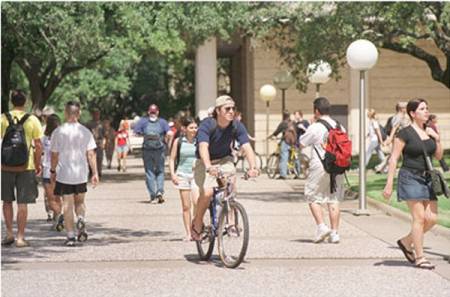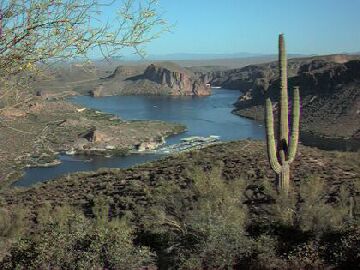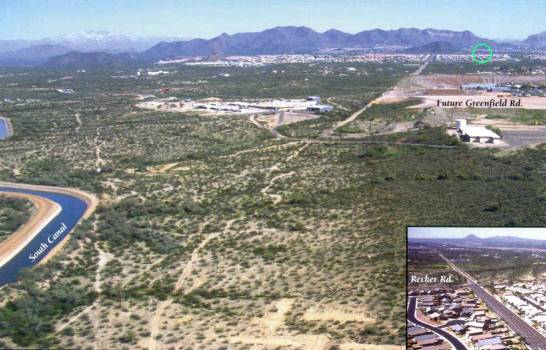 I left Sweden in October 2001 due to a lack of funding, among other things, and worked
3 months in Professor Brad Vinson's group in the Dept. of Entomology at Texas A&M University. This was a
rewarding and enjoyable experience. I investigated the
chemical ecology of fire ants, Solenopsis invicta, being stung only
about twice per month (it really doesn't hurt very much, but I only let them bite me for the briefest of moments).
I left Sweden in October 2001 due to a lack of funding, among other things, and worked
3 months in Professor Brad Vinson's group in the Dept. of Entomology at Texas A&M University. This was a
rewarding and enjoyable experience. I investigated the
chemical ecology of fire ants, Solenopsis invicta, being stung only
about twice per month (it really doesn't hurt very much, but I only let them bite me for the briefest of moments).

 In January 2002, I began a new career in Phoenix, Arizona. The Western Cotton Research Laboratory, USDA, ARS, hired me
in a permanent position to do chemical ecology research on cotton pest insects. Our laboratory will be moved in 2 years to Maricopa, a small community sourth
of Phoenix about 30 miles. We will get new facilities. Our name will be changed at that time to the "ARID LAND AGRICULTURAL RESEARCH CENTER".
The research on pest insects is now focused on cotton but probably will become more extensive to include other important plants grown on arid lands (in Arizona and surrounding states).
Who knows this could someday include bark beetles of pines, which Arizona now has the worst outbreak in many years due to a drought
that began in 1999.
In January 2002, I began a new career in Phoenix, Arizona. The Western Cotton Research Laboratory, USDA, ARS, hired me
in a permanent position to do chemical ecology research on cotton pest insects. Our laboratory will be moved in 2 years to Maricopa, a small community sourth
of Phoenix about 30 miles. We will get new facilities. Our name will be changed at that time to the "ARID LAND AGRICULTURAL RESEARCH CENTER".
The research on pest insects is now focused on cotton but probably will become more extensive to include other important plants grown on arid lands (in Arizona and surrounding states).
Who knows this could someday include bark beetles of pines, which Arizona now has the worst outbreak in many years due to a drought
that began in 1999.
 Here is an aerial photo of the community in north-central Mesa looking toward (Las Sendas next to the distant mountains where I live (green circle).
The desert areas on central/left of picture are in the Salt River Indian Reservation. Mountains are in the Tonto National Forest.
Phoenix is behind the view point, while Scottsdale is to the left and also behind the view angle.
Superstition mountain (and the lost Dutchman's gold mine) is partly
visible on the top-right of photo. Snow-capped mountains on left ("Four Peaks") are in Tonto National forest (which comes to within 1 mile from my house).
Here is an aerial photo of the community in north-central Mesa looking toward (Las Sendas next to the distant mountains where I live (green circle).
The desert areas on central/left of picture are in the Salt River Indian Reservation. Mountains are in the Tonto National Forest.
Phoenix is behind the view point, while Scottsdale is to the left and also behind the view angle.
Superstition mountain (and the lost Dutchman's gold mine) is partly
visible on the top-right of photo. Snow-capped mountains on left ("Four Peaks") are in Tonto National forest (which comes to within 1 mile from my house).
 I left Sweden in October 2001 due to a lack of funding, among other things, and worked
3 months in Professor Brad Vinson's group in the Dept. of Entomology at Texas A&M University. This was a
rewarding and enjoyable experience. I investigated the
chemical ecology of fire ants, Solenopsis invicta, being stung only
about twice per month (it really doesn't hurt very much, but I only let them bite me for the briefest of moments).
I left Sweden in October 2001 due to a lack of funding, among other things, and worked
3 months in Professor Brad Vinson's group in the Dept. of Entomology at Texas A&M University. This was a
rewarding and enjoyable experience. I investigated the
chemical ecology of fire ants, Solenopsis invicta, being stung only
about twice per month (it really doesn't hurt very much, but I only let them bite me for the briefest of moments).

 In January 2002, I began a new career in Phoenix, Arizona. The Western Cotton Research Laboratory, USDA, ARS, hired me
in a permanent position to do chemical ecology research on cotton pest insects. Our laboratory will be moved in 2 years to Maricopa, a small community sourth
of Phoenix about 30 miles. We will get new facilities. Our name will be changed at that time to the "ARID LAND AGRICULTURAL RESEARCH CENTER".
The research on pest insects is now focused on cotton but probably will become more extensive to include other important plants grown on arid lands (in Arizona and surrounding states).
Who knows this could someday include bark beetles of pines, which Arizona now has the worst outbreak in many years due to a drought
that began in 1999.
In January 2002, I began a new career in Phoenix, Arizona. The Western Cotton Research Laboratory, USDA, ARS, hired me
in a permanent position to do chemical ecology research on cotton pest insects. Our laboratory will be moved in 2 years to Maricopa, a small community sourth
of Phoenix about 30 miles. We will get new facilities. Our name will be changed at that time to the "ARID LAND AGRICULTURAL RESEARCH CENTER".
The research on pest insects is now focused on cotton but probably will become more extensive to include other important plants grown on arid lands (in Arizona and surrounding states).
Who knows this could someday include bark beetles of pines, which Arizona now has the worst outbreak in many years due to a drought
that began in 1999.
 Here is an aerial photo of the community in north-central Mesa looking toward (Las Sendas next to the distant mountains where I live (green circle).
The desert areas on central/left of picture are in the Salt River Indian Reservation. Mountains are in the Tonto National Forest.
Phoenix is behind the view point, while Scottsdale is to the left and also behind the view angle.
Superstition mountain (and the lost Dutchman's gold mine) is partly
visible on the top-right of photo. Snow-capped mountains on left ("Four Peaks") are in Tonto National forest (which comes to within 1 mile from my house).
Here is an aerial photo of the community in north-central Mesa looking toward (Las Sendas next to the distant mountains where I live (green circle).
The desert areas on central/left of picture are in the Salt River Indian Reservation. Mountains are in the Tonto National Forest.
Phoenix is behind the view point, while Scottsdale is to the left and also behind the view angle.
Superstition mountain (and the lost Dutchman's gold mine) is partly
visible on the top-right of photo. Snow-capped mountains on left ("Four Peaks") are in Tonto National forest (which comes to within 1 mile from my house).